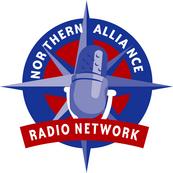
« Now Murtha Wants To Surrender For Other Nations | Main | Walk, Don't Run 2006 »
One of the earliest on-line experiences for home computer users came from America On Line, known better now by its initials AOL. It started service in 1989 as an exclusively Apple service, but gained popularity by providing squeaky-clean content in a single user-friendly interface for computer neophtytes. It took several years before AOL allowed its users to access the wilds of the Internet, but eventually dominated that market as well. At its peak, AOL had over 26 million paid subscribers to its service.
Unfortunately, those days have long since passed. With the broadband revolution, AOL's dial-up services are increasingly anachronistic, and their subscriber base has begun a steep decline. After losing close to 40%, AOL has decided on a new strategy -- giving itself away:
Time Warner, the symbol of the early dotcom rise and fall, geared up for a last desperate throw of the dice yesterday. In an attempt to save its ailing AOL internet business, which has been rapidly losing lucrative American users, Time Warner is turning its back on its well established subscription model. AOL will offer its distinctive services such as email and web security free to anyone with broadband, relying on the revenues generated by online advertising. ...AOL has lost nine million customers in almost four years, slumping from a high of 26.7 million in September 2002 to 17.7 million at the end of June this year. The rate has been increasing as dial-up users migrate to broadband. Attempts to get into the broadband market have been hampered by the make-up of the US cable and telephone market. It has tried to sign wholesale deals with network companies to use their pipes for a broadband product but with little success.
As a result AOL's dial-up users have to pick a rival broadband service if they want super-fast internet access. To make up for the lack of broadband access, AOL has made its services available to broadband users for a monthly fee - generally about $15. About 6.2 million Americans who have broadband provided by someone else pay for this service. But as consumers become more web savvy they have been realising that they can get free email from the likes of Google and they are dumping AOL.
"Our members don't want to leave," said Mr Bewkes. "They want to keep using AOL and they tell us that the number one reason that they leave AOL when they switch to broadband is price, so now we are fixing that problem. We are going to stop sending our members to our competitors."
I'm surprised that AOL took this long to figure out their problem, and I'm still not sure they understand it fully. Broadband only represents one reason for their decline. The other comes from the natural expertise developed by Internet users and the wide availablity of content.
AOL built its business on its one-stop interface and exclusive content. At one time, Internet users without AOL had little choice in general-interest content, or at least a limited way to access it. With AOL, one could find reference materials, news services, magazines, chat rooms, e-mail, gaming, and a wide variety of other content in one spot. The Internet, without that powerful interface, was uncharted territory for most casual users. That changed with the advent of Yahoo!, Google, and other navigational sites. Instead of relying on AOL's slow-loading interface, netsurfers could find their content quickly and reliably, using just a web browser.
AOL had one other key asset -- its reliable and national dial-up service. Straight Internet providers rarely could provide that kind of ease, at least not at first. For those users who traveled frequently, AOL gave them a fully portable account where e-mail and stored information could easily get accessed. Web mail sites, offering their services for free, eroded that advantage over the last few years.
Broadband has not been quite the bogeyman painted by the Guardian in this article. AOL recognized the issue of charging a dial-up subscription rate for users who wanted faster access. They developed the Bring Your Own Access plan, which cost users only $4.95 per month to access the service outside of their dial-up servers. It still required the AOL software to be installed on the computer, however, with all of its overhead and slow responses magnified by the speed of regular Internet surfing.
Will the new model work for AOL? Hopefully; those of us with Internet sites hope that Internet advertising becomes a successful model for content providers. AOL may in the end suffer from its almost-inherently anachronistic approach. In a world of expert Internet users and ever-easier methods of netsurfing, who really needs the handholding that AOL offers?
Sphere ItTrackback Pings
TrackBack URL for this entry is
Listed below are links to weblogs that reference AOL Will Try Giving Itself Away:
» Hitting to all Fields 08/04/06 from Ennuipundit
Leading Off The Boston Globe finds itself in a mess. The Globe published a story last week that relied on a memo the Globe received. The memo was allegedly written in 1999 by John J. Keaveney. That’s Keaveney’s story and he’s stic... [Read More]
Tracked on August 4, 2006 9:47 AM

captain*at*captainsquartersblog.com


My Other Blog!
E-Mail/Comment/Trackback Policy
Comment Moderation Policy - Please Read!
Skin The Site








Hugh Hewitt
Captain's Quarters
Fraters Libertas
Lileks
Power Line
SCSU Scholars
Shot In The Dark
Northern Alliance Radio Network
Northern Alliance Live Streaming!



Des Moines Register
International Herald Tribune
The Weekly Standard
Drudge Report
Reason
The New Republic
AP News (Yahoo! Headlines)
Washington Post
Guardian Unlimited (UK)
New York Times
Los Angeles Times
OpinionJournal
Pioneer Press
Minneapolis Star-Tribune
MS-NBC
Fox News
CNN

Design & Skinning by:
m2 web studios
blog advertising

- dave on Another National Health Care System Horror Story
- brooklyn on Hillary Not Hsu Happy
- rbj on Hillary Not Hsu Happy
- Robin S on Requiem For A Betrayed Hero
- Ken on Hillary Not Hsu Happy
- Robin S. on Requiem For A Betrayed Hero
- RBMN on Hillary Not Hsu Happy
- NoDonkey on Another National Health Care System Horror Story
- Robin Munn on Fred Thompson Interview Transcript
- filistro on When Exactly Did Art Die?










